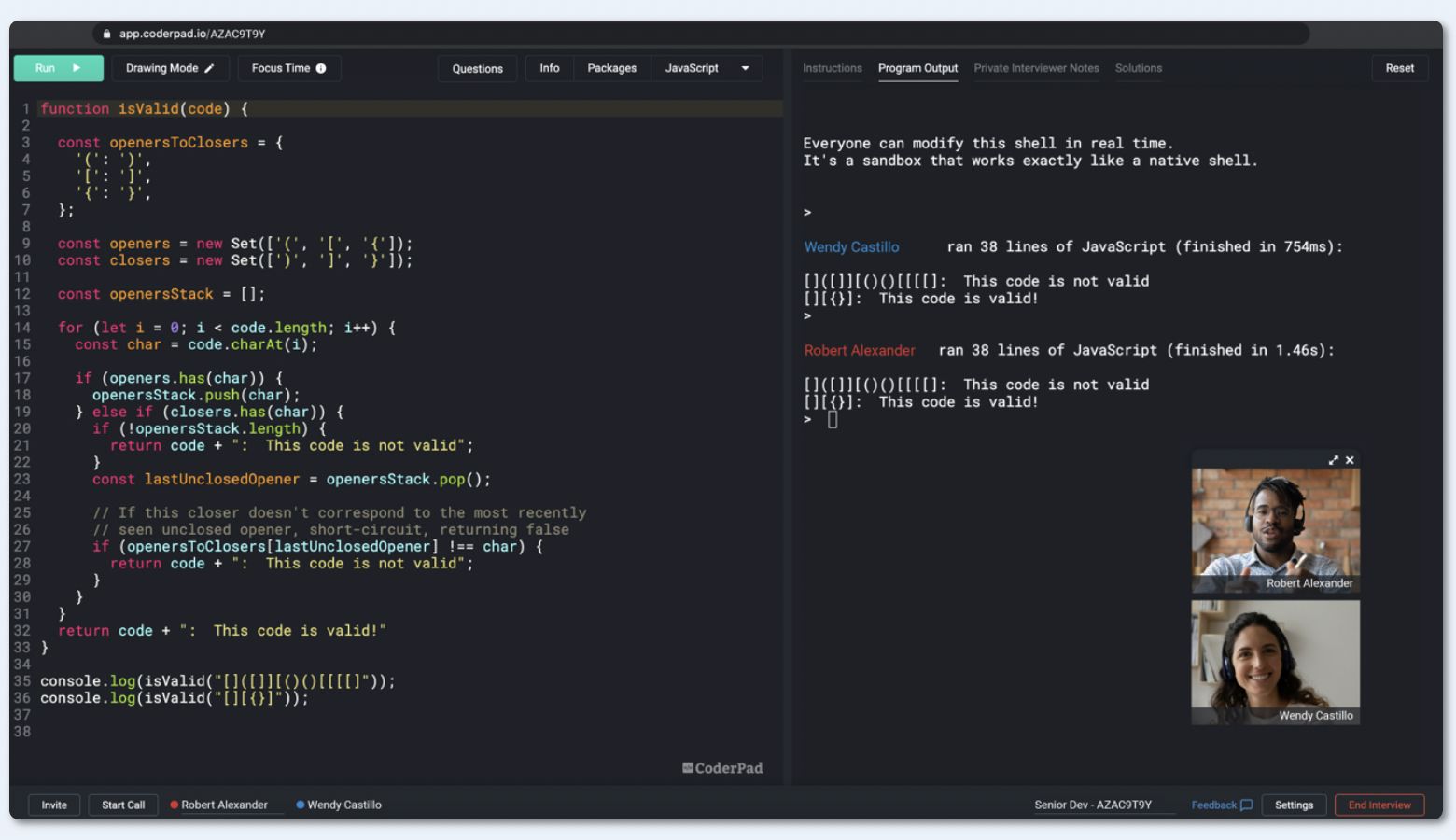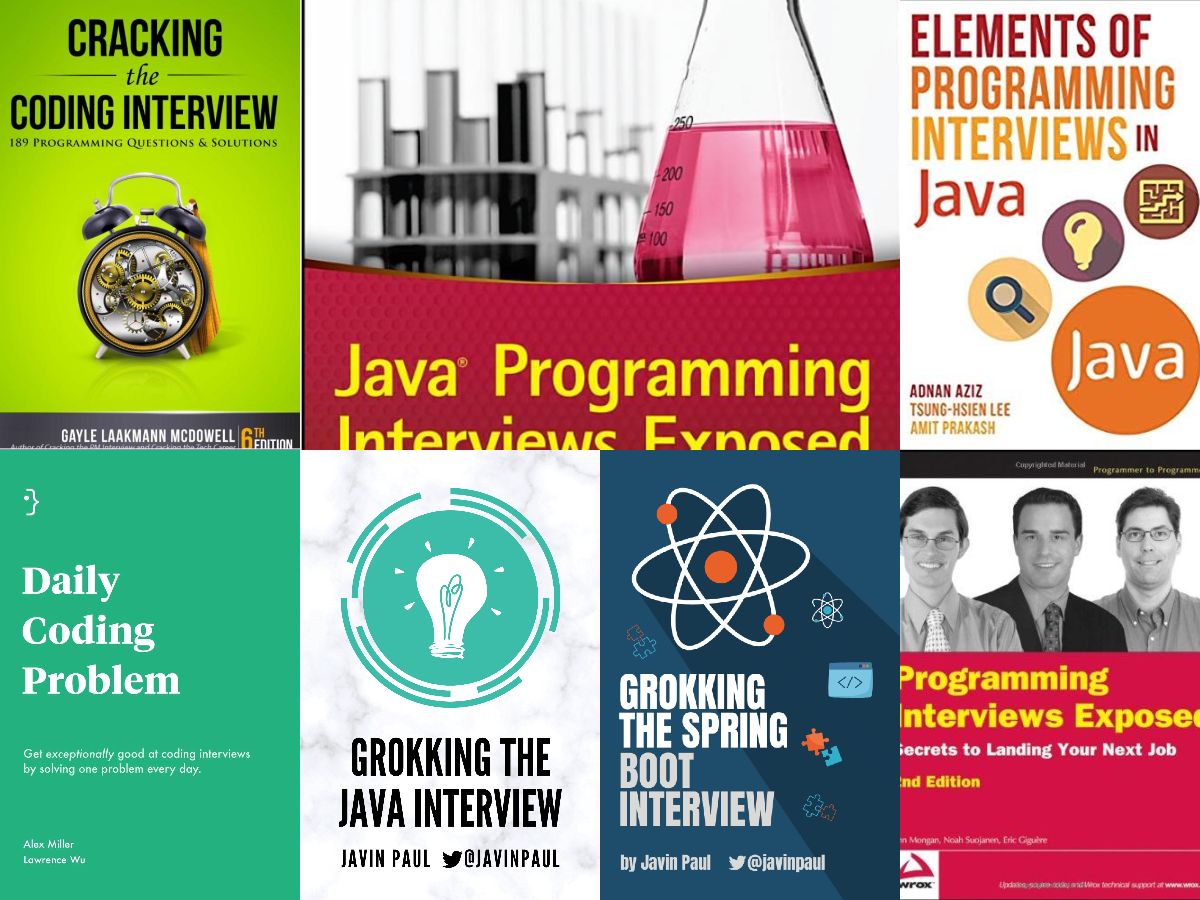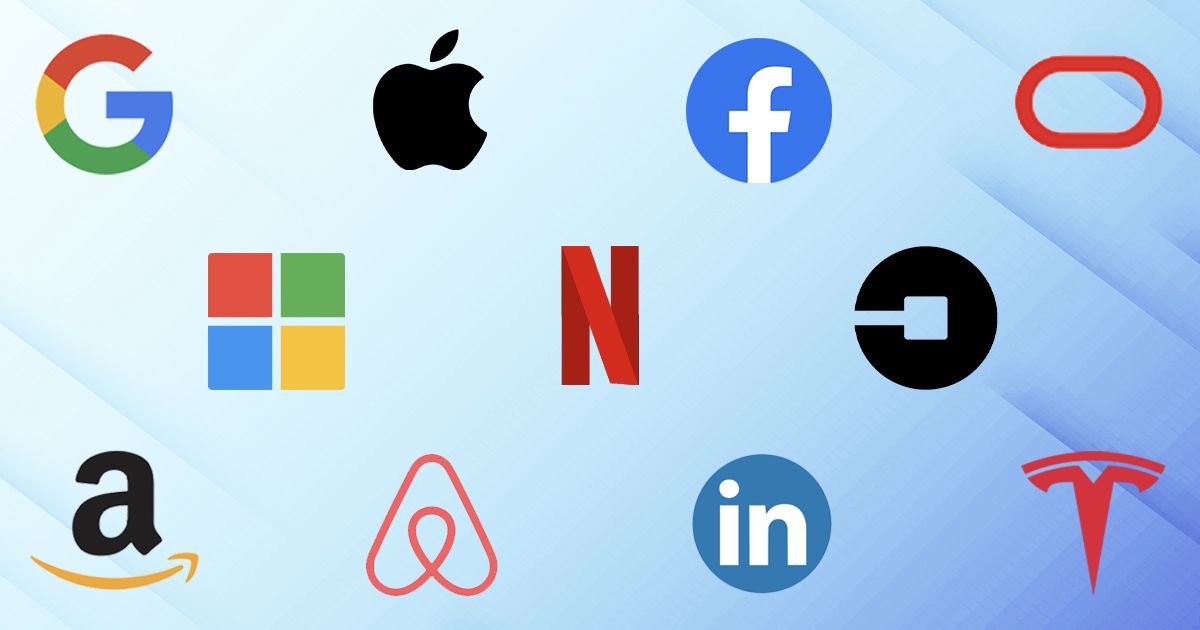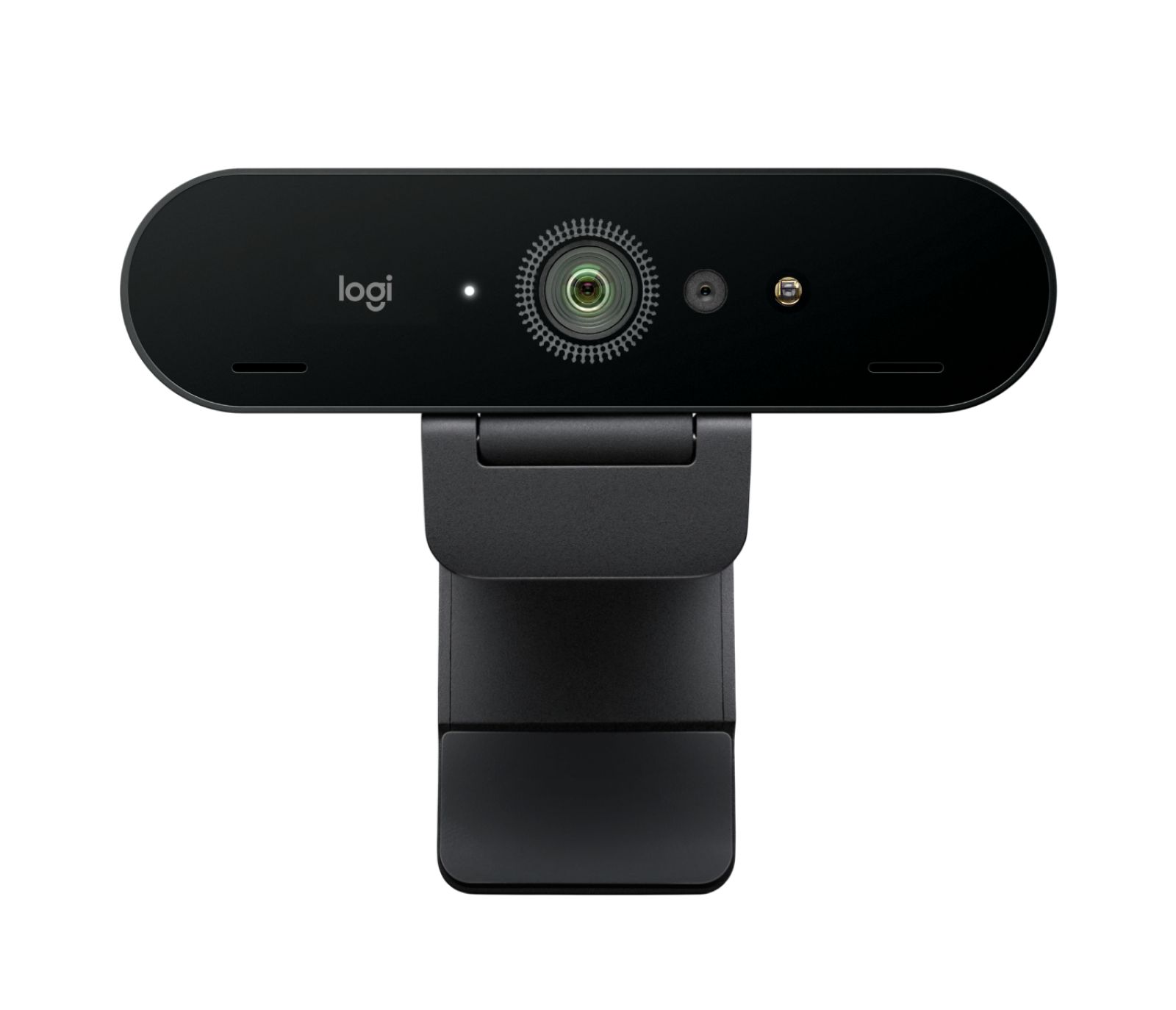Introduction
Welcome to the age of remote work interviews! With the advancements in technology, many companies are now conducting interviews online, specifically on platforms like Zoom. While the convenience of interviewing from the comfort of your own home may seem appealing, it’s important to approach virtual interviews with the same level of professionalism as face-to-face interviews.
Zoom interviews offer a unique set of challenges and opportunities that can greatly impact your chances of acing the interview. The key is to adapt to this new format and harness its potential to showcase your skills and qualifications effectively.
In this article, we will explore essential tips and strategies to help you give your best performance during a Zoom interview. From preparing your technology and creating a professional environment to mastering your body language and answering questions succinctly, we have got you covered.
Whether you’re a seasoned professional or a recent graduate, these guidelines will equip you with the necessary tools to succeed in your next Zoom interview. So, let’s dive in and discover how you can make a lasting impression and secure that job offer!
Prepare Your Technology
Before the interview, it’s crucial to ensure that your technology is set up properly to avoid any potential glitches or interruptions. Here are some steps to take:
First and foremost, make sure you have a stable internet connection. Disconnect any other devices from your network and consider using an Ethernet cable if Wi-Fi is unreliable in your area. This will minimize the chances of disconnecting during the interview.
Next, install the Zoom software and familiarize yourself with its features. Test your webcam and microphone to ensure they are working correctly. Adjust the camera angle so that you are centered and clearly visible onscreen. Position yourself at a comfortable distance from the camera, ensuring that your face is well-lit without any harsh shadows.
To avoid any audio issues, use a headset or earphones with a built-in microphone. This will help reduce background noise and ensure that your voice comes through clearly. Test the audio settings in Zoom and adjust the volume levels as needed.
It’s also advisable to have a backup plan in case of technical difficulties. Keep the contact information of the interviewer handy, so that you can quickly inform them and reschedule the interview if necessary.
Lastly, close any unnecessary programs or browser tabs on your computer to optimize its performance during the video call. This will prevent any distractions or lags during the interview.
By taking the time to prepare your technology in advance, you can ensure a smooth and seamless interview experience.
Create a Professional Environment
Although you may be interviewing from the comfort of your own home, it’s important to create a professional environment to make a good impression on the interviewer. Here are some tips to help you set the stage:
Choose an appropriate location for your interview. Ideally, select a quiet and well-lit room where you can have privacy and minimal interruptions. Make sure the background is neat and clutter-free. Consider setting up a plain backdrop or using a virtual background if necessary.
Ensure that the lighting is adequate and flattering. Natural light is usually the best option, so position yourself facing a window or use soft artificial lighting to illuminate your face. Avoid backlighting, which can make you appear shadowy or indistinct.
Pay attention to your surroundings. Remove any distracting or unprofessional items from view, such as posters, personal belongings, or a messy workspace. Your interviewer should be focused on you and what you have to say, not on the distractions in the background.
Set up a comfortable and ergonomic seating arrangement. A sturdy chair and a properly positioned desk can help you maintain good posture and appear professional throughout the interview. Remember to sit up straight and avoid slouching or fidgeting.
Minimize background noise as much as possible. Inform anyone in your household about the interview and kindly request them to limit any noise or disruptions during that time. Close doors and windows to reduce outside noise and consider using headphones to block out any distractions.
Keep any relevant documents or notes organized and within reach. Have a pen and paper handy to jot down any important points or questions that may come up during the interview. However, try to maintain eye contact with the camera as much as possible to demonstrate engagement.
Creating a professional environment will not only make you feel more confident and focused but also demonstrate your commitment and professionalism to the interviewer.
Dress Professionally
Although you might be tempted to dress casually when interviewing from home, it’s important to dress professionally for a Zoom interview. Your appearance plays a significant role in making a positive first impression. Here are some tips to help you dress for success:
Wear appropriate attire that is consistent with the company’s dress code. Research the company beforehand to get a sense of their culture and expectations. If they typically have a more formal dress code, opt for business attire such as a suit or professional dress. If the environment is more casual, you may be able to dress in business casual attire.
Choose solid, neutral colors for your clothing as they tend to be more visually appealing on camera. Avoid patterns or colors that can be distracting or clash with your background. Stick to classic styles that convey professionalism and confidence.
Pay attention to grooming and personal hygiene. Style your hair neatly and ensure that it is away from your face. Keep your facial hair well-groomed or opt for a clean-shaven look. Apply minimal, natural-looking makeup if you choose to wear it. Make sure your nails are clean and trimmed.
Remember that a professional appearance extends beyond clothing. Pay attention to your body language and overall demeanor. Sit up straight and maintain good posture throughout the interview. Avoid excessive fidgeting or distractions that can take away from your presentation.
Dressing professionally not only demonstrates respect for the interviewer and the company, but it also helps you feel more confident and focused during the interview. When you look the part, you are more likely to convey your qualifications and abilities effectively.
Be Punctual
Being punctual is a crucial aspect of any interview, whether it’s in-person or on Zoom. In fact, being late for a virtual interview can leave a negative impression and potentially jeopardize your chances of success. Here’s how you can ensure punctuality for your Zoom interview:
Set a reminder: As soon as you receive the interview invitation, mark it on your calendar and set up a reminder. Give yourself enough time to prepare so that you can log in to the meeting a few minutes early.
Test your internet connection and technology beforehand: Avoid the last-minute panic of dealing with technical issues. Ensure that your internet is stable and that your computer, webcam, and microphone are working properly. Test them in advance to iron out any potential problems.
Be aware of time zone differences: If you are interviewing with a company in a different time zone, make sure you clarify the interview time in their local time. Pay attention to any subtle differences like daylight saving time that might affect the timing.
Allocate extra time for troubleshooting: Even with extensive preparation, unforeseen technical issues can still arise. Give yourself a buffer window to troubleshoot any last-minute problems that may occur and still be able to start the interview on time.
Plan your schedule accordingly: Consider any potential disruptions that could occur during the interview. Ensure that you have a quiet and distraction-free environment for the duration of the interview. Communicate with household members or roommates about the importance of maintaining silence during that time.
Join the meeting early: Aim to join the Zoom meeting at least 5-10 minutes before the scheduled start time. This will give you time to ensure that your audio and video are working correctly and help you make a composed entrance when the interviewer joins.
By demonstrating punctuality, you show the interviewer that you value their time and are committed to the interview process. Being on time also allows you to start the interview on a positive note and reduces any unnecessary stress or anxiety that may arise from rushing.
Test the Video and Audio
Ensuring that your video and audio are working properly is essential for a successful Zoom interview. Technical difficulties can hinder effective communication and leave a negative impression on the interviewer. Here are some steps to follow to test your video and audio:
Check your webcam: Make sure your webcam is functioning correctly. Open the Zoom software and go to the settings to access the video options. Verify that your webcam is selected and displaying a clear image. Adjust the camera angle and positioning as needed to ensure you are centered and visible.
Test your microphone: Good audio quality is crucial to ensure clear communication during the interview. Open the Zoom software and go to the settings to access the audio options. Check that the correct microphone is selected and adjust the volume levels accordingly. Test your microphone by speaking into it and ask a friend or family member to confirm that they can hear you clearly.
Configure audio settings: Familiarize yourself with the audio settings in Zoom. Enable the “Auto” option for audio and adjust the input and output volume to an appropriate level. Test the audio by playing a sample video or music to ensure that the sound is balanced and audible.
Consider using headphones: Using headphones with a built-in microphone can help improve audio quality and minimize background noise. If you have a pair of headphones or earphones, test them to ensure they are working properly and provide clear audio.
Perform test calls: Before the interview, schedule a practice call with a friend or family member to test your video and audio. Use this opportunity to verify that everything is functioning as expected and make any necessary adjustments. This will help you feel more confident and prepared for the actual interview.
Ensure a stable internet connection: A reliable internet connection is vital during a Zoom interview. Close any unnecessary applications or browser tabs that may consume bandwidth. Consider connecting your computer directly to the router using an Ethernet cable for a more stable connection, if possible.
By thoroughly testing your video and audio in advance, you can identify and resolve any technical issues, ensuring a smooth and uninterrupted interview experience. This proactive approach demonstrates your professionalism and attention to detail to the interviewer.
Master Your Body Language
Mastering your body language is crucial for creating a positive and engaging impression during a Zoom interview. Your nonverbal cues can convey confidence, professionalism, and attentiveness. Here are some tips to help you master your body language:
Sit up straight: Maintaining good posture is essential for projecting confidence and professionalism. Sit up straight with your shoulders back, and avoid slouching or leaning to the side during the interview. This will not only make you look more engaged but also help you breathe properly, reducing any nervousness or tension.
Maintain eye contact: Eye contact is essential for building rapport and demonstrating attentiveness. Look directly into the webcam when speaking or listening. Avoid constantly looking at your own image or other participants’ videos. By maintaining eye contact, you show the interviewer that you’re genuinely interested and focused on the conversation.
Use facial expressions: Your facial expressions can convey a range of emotions and messages. Smile warmly to appear friendly and approachable. Show enthusiasm and interest through your facial expressions, nodding your head when appropriate. However, be mindful of not overdoing it and appearing unnatural.
Gesture naturally: Gestures can enhance your communication and make you appear more expressive. Use hand gestures sparingly and naturally to emphasize key points or to demonstrate understanding. Avoid excessive or distracting gestures that can take away from your message.
Control nervous habits: Nervous habits such as tapping your foot, playing with your hair, or fidgeting with your hands can be distracting for the interviewer. Be mindful of these habits and try to control them throughout the interview. Taking a few deep breaths before the interview can help you relax and maintain composure.
Be aware of your background: The background behind you can influence how you are perceived during the interview. Choose a clean and uncluttered backdrop that is free from distractions or personal items. Make sure the background is professional and in line with the image you want to project.
Show active listening: Engage actively in the conversation by using affirmative gestures like nodding your head, maintaining an open body posture, and leaning slightly towards the camera. This will convey that you are listening attentively and engaged in the discussion.
While body language may not be as noticeable in a virtual setting, it still plays a significant role in how you are perceived by the interviewer. By mastering your body language, you can enhance your communication effectiveness, build rapport, and leave a lasting positive impression.
Maintain Eye Contact
Maintaining eye contact is a powerful nonverbal communication technique that showcases your engagement, confidence, and attentiveness during a Zoom interview. Although the dynamics of eye contact are different in a virtual setting, there are several strategies you can employ to ensure effective eye contact:
Look into the camera: When speaking or listening, make a conscious effort to look directly into the camera. This creates the illusion of direct eye contact with the interviewer. Place the camera at eye level or slightly above to maintain a natural gaze. Avoid the temptation to look at your own image or the faces of other participants on the screen.
Focus on the interviewer’s face: During the interview, pay attention to the interviewer’s facial expressions and cues. Look at their face on the screen to gauge their reactions and respond accordingly. This will demonstrate that you are actively listening and interested in their words.
Take brief breaks to glance at the screen: While it is important to look into the camera, it is also beneficial to occasionally glance at the screen to ensure you’re not missing any nonverbal cues from the interviewer. However, try to limit these glances and quickly return your focus to the camera to maintain eye contact.
Practice active listening through eye contact: Use your eye contact to convey that you are actively listening to the interviewer’s questions and statements. Nod your head, smile, and react appropriately to show understanding and engagement. This will demonstrate your attentiveness and help build rapport.
Be mindful of eye movements: Avoid excessive blinking, darting eyes, or shifty glances, as these can be perceived as signs of nervousness or lack of focus. Maintain a comfortable and steady gaze to project confidence and professionalism.
Remember that virtual eye contact may feel different than in-person interaction but it is still an essential aspect of effective communication. By being intentional and mindful of your eye contact, you can establish a connection with the interviewer and convey your interest and enthusiasm for the position.
Speak Clearly and Confidently
Speaking clearly and confidently is a key factor in making a positive impression during a Zoom interview. Your verbal communication skills play a significant role in conveying your ideas, qualifications, and enthusiasm for the position. Here are some strategies to help you speak effectively:
Enunciate your words: Pronounce your words clearly and distinctly to ensure that your message is easily understood. Avoid speaking too quickly or mumbling, as this can make it challenging for the interviewer to follow your responses. Take your time to articulate each word and use proper intonation to convey meaning.
Control your pace: Find a comfortable pace of speech that is neither too slow nor too fast. Speak at a moderate speed, allowing the interviewer to process your responses and follow along with ease. Pausing briefly between sentences or thoughts can also help to emphasize key points and add clarity.
Use confident body language: Your body language can influence your vocal delivery. Sit up straight, maintain an open and relaxed posture, and use hand gestures when appropriate. Engaging in confident body language will naturally enhance your vocal confidence and help you project professionalism.
Avoid filler words: Minimize the use of filler words such as “um,” “like,” or “you know.” These words can detract from your message and make you appear unsure or less confident in your responses. Take a brief pause instead to gather your thoughts before speaking.
Use varied vocal expression: Employ a range of vocal tones, volumes, and inflections to add depth and engagement to your speech. Avoid speaking in a monotone voice, as this can come across as dull or uninterested. Vary your pitch and modulation to convey enthusiasm and emphasize important points.
Listen actively: Actively listening to the interviewer’s questions and prompts will help you respond more effectively. Pay attention to their intonation and cues to understand the context and respond appropriately. Showing that you are fully engaged in the conversation will help you speak confidently and convincingly.
Practice speaking: Prior to the interview, practice answering commonly asked interview questions to build confidence in your speaking abilities. Record yourself or conduct mock interviews with a friend to identify areas for improvement. Practicing out loud will help you become more comfortable with your speaking style.
Speaking clearly and confidently showcases your communication skills and professionalism to the interviewer. By employing these strategies and practicing beforehand, you can deliver your responses with clarity, conviction, and impact.
Eliminate Distractions
Eliminating distractions during a Zoom interview is crucial for maintaining focus and conveying professionalism. Minimizing potential disruptions will help you stay engaged and present during the interaction. Here are some tips to help you eliminate distractions:
Find a quiet location: Choose a quiet and secluded area where you are less likely to be interrupted or distracted. Inform those around you that you will be in a virtual interview and request their support in maintaining a quiet environment during that time.
Mute notifications: Turn off all notifications on your computer and mobile devices to avoid interruptions from incoming calls, messages, or email alerts. Close any unnecessary applications or tabs on your computer that might trigger distracting notifications during the interview.
Close physical doors: Close the door to the room you are in to minimize noise from other parts of your home. This can help reduce external sounds and provide a sense of privacy during the interview. It also serves as a visual signal to others that you are engaged in an important conversation.
Remove visual distractions: Clear your immediate surroundings of any potential visual distractions. Tidy up your workspace and remove any clutter or personal items that may divert your attention or appear unprofessional on camera. Create a clean and minimalistic backdrop that places the focus on you and the interview.
Manage pets and children: If you have pets or children at home, make arrangements to ensure they are cared for and occupied during the interview. Plan ahead and coordinate with a family member, friend, or neighbor to take care of them so that you can fully concentrate on the interview.
Ensure stable internet connection: A reliable internet connection is crucial for a smooth and uninterrupted interview. Close any bandwidth-intensive applications and ensure that you have a stable Wi-Fi or ethernet connection. Be prepared with a backup plan, such as a mobile data hotspot, in case of any internet outages.
Stay focused: During the interview, maintain your focus on the interviewer and the conversation. Avoid multitasking or engaging in unrelated activities on your computer or mobile device. Give your full attention to the interviewer by actively listening, taking notes, and responding thoughtfully.
By eliminating distractions, you create an environment that allows you to fully engage in the interview and demonstrate your professionalism and dedication. Striving for a distraction-free experience showcases your commitment and respect to the interviewer and enhances your chances of making a positive impression.
Use Visual Aids Effectively
Using visual aids during a Zoom interview can enhance your presentation, clarify information, and engage the interviewer. When utilized effectively, visual aids can help you convey your points more clearly and leave a lasting impression. Here are some tips for using visual aids effectively:
Choose relevant visuals: Select visuals that are directly related to the topic of discussion and support your key points. This can include graphs, charts, images, or slides. Ensure that the visuals are easy to understand and visually appealing. Avoid overwhelming the interviewer with too much information or cluttered visuals.
Keep it simple: Simple and concise visuals are more effective in conveying information. Use bullet points, keywords, or short phrases to highlight key details. Avoid long paragraphs or excessive text. Maintain a clean and uncluttered design that allows the interviewer to focus on the content.
Use consistent branding: If you create slides or other visual aids, consider incorporating consistent branding elements such as the company logo or colors. This can help create a polished and professional impression. However, be mindful not to overly focus on branding, as the main emphasis should be on your qualifications and discussion.
Share your screen: Utilize the screen sharing feature in Zoom to show your visual aids directly to the interviewer. Before the interview, ensure that you are familiar with how to share your screen and switch between different visuals seamlessly. Practice sharing your screen to avoid any technical issues during the interview.
Explain the visuals clearly: When sharing visuals, provide a brief explanation or overview of each visual aid. Narrate the key points or insights that the visuals represent. This will ensure that the interviewer understands the purpose and relevance of the visuals and how they support your responses.
Use visuals sparingly: While visual aids can be beneficial, it’s important not to rely too heavily on them. Balance your use of visuals with direct communication and maintain eye contact with the interviewer. Visuals should enhance and complement your messages rather than overtake the conversation.
Practice with visuals: Before the interview, practice presenting with your chosen visual aids to ensure that you are comfortable and confident in using them. This will help you familiarize yourself with the content and timing of each visual, allowing for a smooth and seamless presentation during the actual interview.
Using visual aids effectively can elevate your interview performance and help you effectively communicate complex information. By following these tips and integrating visuals seamlessly, you can leave a lasting impact on the interviewer and effectively convey your qualifications and ideas.
Be Engaged and Show Interest
Being engaged and showing genuine interest during a Zoom interview is just as important as it is in a face-to-face interview. Demonstrating enthusiasm and attentiveness not only conveys your passion for the role but also establishes rapport with the interviewer. Here are some strategies to help you stay engaged and show interest:
Listen actively: Pay close attention to the interviewer’s questions and remarks. Avoid interrupting and let the interviewer finish speaking before responding. By actively listening, you can understand their expectations, gather valuable information, and tailor your responses accordingly.
Show enthusiasm: Let your enthusiasm for the position and the company shine through. Smile genuinely and adopt a positive and enthusiastic tone during the interview. Speak with energy and showcase your excitement for the opportunity.
Ask thoughtful questions: Prepare a list of questions to ask the interviewer to show your genuine interest in the company, its culture, and the specific role. Pose questions that demonstrate your knowledge of the company or seek clarification on aspects that genuinely intrigue you. Engaging in a meaningful conversation with the interviewer will make you stand out.
Provide thoughtful responses: When answering questions, take a moment to gather your thoughts and provide well-thought-out responses. Share relevant experiences and examples that highlight your skills and qualifications. Be sure to directly address the interviewer’s concerns or needs, showing that you understand their perspective.
Engage through body language: Utilize positive body language to convey your engagement. Nod your head occasionally to show agreement or understanding. Lean slightly forward to demonstrate active participation and interest. Maintain eye contact to establish a connection and display a genuine focus on the conversation.
Show gratitude and appreciation: Express your gratitude to the interviewer for their time and the opportunity to interview. Thank them for the insights they share and the information they provide. Sending a follow-up thank-you email after the interview is another way to convey your genuine appreciation.
Be mindful of non-verbal cues: Be aware of any non-verbal cues that may indicate disinterest or distraction. Avoid fidgeting, checking your phone, or looking away from the camera while the interviewer is speaking. Present yourself as fully engaged and present throughout the entire interview.
By being engaged and showing genuine interest, you create a positive and memorable impression on the interviewer. Your enthusiasm and active participation will help you establish a rapport and increase your chances of making a lasting impact during the interview process.
Practice Active Listening
Active listening is a vital skill during a Zoom interview as it demonstrates your attentiveness, comprehension, and respect for the interviewer. It allows you to fully understand the questions asked, gather relevant information, and provide thoughtful responses. Here are some techniques to practice active listening during your interview:
Focus on the interviewer: Give your undivided attention to the interviewer throughout the conversation. Maintain eye contact and keep your focus on their face on the screen. This shows that you are actively engaged and interested in what they are saying.
Avoid interrupting and listen fully: Resist the urge to interrupt the interviewer while they are speaking. Allow them to finish their sentences or questions before responding. By actively listening to their complete thoughts, you demonstrate respect and ensure that you have all the necessary information before formulating your response.
Note key points: As the interviewer speaks, take notes on key points or topics that you want to address. This helps to reinforce your understanding and enables you to refer back to those points when formulating your responses.
Show understanding and provide feedback: Use verbal and nonverbal cues to show that you are following along and understanding the interviewer’s message. Nod your head, smile, and use verbal cues such as “I see,” or “I understand” to indicate comprehension. These cues reassure the interviewer that you are actively listening and engaged in the conversation.
Ask clarifying questions: If something is unclear or you need more information to fully understand a question, don’t hesitate to ask for clarification. Paraphrase the interviewer’s question in your own words to ensure that you have correctly understood their intent.
Avoid distractions: Minimize distractions during the interview to maintain focus. Close any unnecessary windows or applications on your computer to prevent visual distractions. Find a quiet location, away from any potential interruptions or background noise.
Summarize and rephrase: After the interviewer has finished speaking, summarize or rephrase their question or statement to confirm your understanding. This technique not only shows that you have been actively listening but also allows the interviewer to clarify any misinterpretations on your part.
Engage with follow-up questions: Demonstrate your active listening by asking insightful follow-up questions. Show a genuine interest in the topic by seeking further information or elaboration from the interviewer. This will not only showcase your engagement but also help you gather valuable insights about the position and the company.
Active listening during a Zoom interview elevates your communication skills and demonstrates your genuine interest in the conversation. By practicing these techniques, you can ensure that you fully comprehend the interviewer’s questions and provide well-thought-out responses that align with their needs and expectations.
Answer Questions Succinctly
Answering interview questions succinctly is a valuable skill that showcases your ability to communicate effectively and articulate your thoughts concisely. By providing concise and focused responses, you demonstrate clarity, confidence, and respect for the interviewer’s time. Here are some strategies to help you answer questions succinctly during your Zoom interview:
Understand the question: Take a moment to fully comprehend the question before responding. If needed, ask for clarification to ensure that you are addressing the interviewer’s specific query. This will help you provide a more targeted and concise response.
Organize your thoughts: Take a breath and organize your thoughts before answering. Determine the key points you want to convey and structure your response accordingly. This will help you stay on track and avoid unnecessary tangents or rambling.
Stick to the point: Focus on providing a direct and concise answer to the question at hand. Avoid going off on tangents or providing excessive background information. Make sure each sentence contributes to your main message and adds value to the interviewer’s understanding.
Be specific and give examples: Support your answers with specific examples from your past experiences or achievements. This adds credibility to your response and helps to illustrate your qualifications. However, be mindful of not delving too much into unnecessary details.
Use clear and simple language: Avoid using complicated jargon or technical terms that may confuse the interviewer. Use clear and straightforward language to convey your thoughts effectively. Keep your sentences concise and to the point, making it easier for the interviewer to follow and understand your response.
Avoid repetition: Be mindful of repetitiveness in your responses. Once you have made your point, there is no need to restate the same information in different ways. Focus on adding new insights or expanding on relevant aspects of your answer.
Pause and assess: Take brief pauses throughout your response to check if you are providing the information the interviewer is seeking. This allows you to ensure that you are on track and not diving too deep into unnecessary details. It also gives the interviewer an opportunity to interject or ask follow-up questions.
Practice brevity: Rehearse your responses beforehand to develop the skill of providing concise answers. Time yourself and aim to deliver key points within a set timeframe. Practicing brevity will help you deliver focused and effective responses during the interview.
Answering questions succinctly demonstrates your ability to convey complex information in a clear and concise manner. By incorporating these strategies, you can communicate effectively and leave a positive impression on the interviewer.
Research the Company and Role
Thoroughly researching the company and the role you are applying for is essential for a successful Zoom interview. It demonstrates your genuine interest, preparedness, and understanding of the organization. Here are some steps to effectively research the company and role:
Explore the company’s website: Start by visiting the company’s website and familiarize yourself with their mission, values, products or services, and recent news or updates. Pay attention to their company culture, as it will provide valuable insights into their working environment and expectations.
Review the job description: Analyze the job description in detail to understand the specific requirements, responsibilities, and qualifications for the role. Identify the key skills and experiences they are seeking in a candidate. This will help you tailor your answers and effectively highlight your relevant qualifications during the interview.
Research company culture and reputation: Look for information about the company’s culture, work environment, and employee testimonials. Check online reviews and professional networking platforms to gain insights into how the company is perceived by its employees and the industry at large. This knowledge will allow you to tailor your answers and demonstrate how your values align with the company culture.
Stay updated with industry trends: Research current trends, challenges, and advancements in the industry in which the company operates. Familiarize yourself with any recent industry news or developments that may be relevant to the role or the company. This knowledge will help you showcase your understanding of the industry and your ability to contribute effectively.
Research the interviewer: If you have information about the interviewer(s), take the opportunity to learn more about their background and professional journey. This can help you establish a connection during the interview and show that you have done your homework.
Seek out company news and media coverage: Look for recent news articles, press releases, or media coverage related to the company. This will give you insights into any major milestones, achievements, or challenges they have experienced. Incorporating this information during the interview can demonstrate your initiative and interest in the company’s current affairs.
Prepare thoughtful questions: Based on your research, come up with thoughtful and specific questions that demonstrate your understanding of the company and the role. Asking intelligent questions about the company’s future plans, challenges, or recent initiatives will show that you are genuinely engaged and interested in the organization.
By conducting thorough research on the company and role, you can effectively align your skills, experiences, and values with their requirements and expectations. This will enable you to showcase your genuine interest during the interview and increase your chances of success.
Prepare Examples and Stories
Preparing examples and stories ahead of your Zoom interview is crucial for highlighting your skills, experiences, and achievements in a compelling and memorable way. By having specific instances ready to share, you can effectively demonstrate your qualifications and make a strong impression on the interviewer. Here’s how to prepare examples and stories for your interview:
Review the job requirements: Identify key skills, qualifications, and experiences mentioned in the job description. Pay close attention to any specific qualities or competencies the company is seeking. Think about past experiences where you have demonstrated these skills or qualities.
Select relevant examples: Select examples from your professional or academic background that align with the job requirements. Choose instances where you successfully tackled challenges, achieved significant results, or demonstrated important skills. Aim for a variety of examples to showcase different aspects of your abilities.
Use the STAR method: Use the STAR method (Situation, Task, Action, Result) to structure your examples. Begin by describing the situation or challenge you faced, followed by the task you needed to accomplish. Then, explain the actions you took to address the situation, and finally, discuss the measurable results or positive outcomes you achieved.
Quantify your achievements: Whenever possible, quantify your achievements to provide tangible evidence of your capabilities. Use numbers, percentages, or specific metrics to demonstrate the impact you made. This helps make your examples more compelling and memorable for the interviewer.
Practice storytelling: Craft your examples into concise, engaging stories that effectively convey your accomplishments. Focus on presenting the challenge, the actions you took to overcome it, and the positive outcomes. Practice telling these stories, ensuring they flow smoothly and captivate the listener.
Tailor examples to the company: Customize your examples to align with the values, goals, and culture of the company. Highlight aspects of your experience that resonate with the organization’s mission and emphasize why you would be a valuable asset to their team.
Connect examples to the role: Draw clear connections between your examples and the requirements of the role. Demonstrate how your past experiences have prepared you for the specific responsibilities and challenges of the position. This shows the interviewer that you have a solid understanding of what the role entails.
Be concise and focused: Keep your examples concise and to the point. Avoid unnecessary details or lengthy explanations. Highlight the most relevant aspects of each example, showcasing your ability to effectively communicate and prioritize information.
By preparing examples and stories, you can effectively showcase your skills and experiences to the interviewer. This approach allows you to present yourself as a strong candidate and leaves a lasting impression of your qualifications and abilities.
Ask Thoughtful Questions
Asking thoughtful questions during a Zoom interview is an opportunity to demonstrate your genuine interest, gather valuable information, and further engage with the interviewer. Thoughtful questions not only showcase your knowledge about the company and role but also help you assess if the position is the right fit for your career goals. Here’s how to ask thoughtful questions during your interview:
Research beforehand: Thoroughly research the company, its values, culture, and recent updates before the interview. This will help you ask relevant questions that demonstrate your knowledge and understanding of the organization.
Ask about company or team goals: Inquire about the company’s short-term and long-term goals, or the team’s objectives. This shows your interest in aligning your aspirations with the organization’s vision and contributes to the conversation about future growth and opportunities.
Seek insights into company culture: Ask questions about the company’s culture, work environment, and values. Inquire about the support for professional development, collaboration among team members, or any diversity and inclusion initiatives. This helps you ascertain if the company’s values align with your own and if it is a place where you can thrive.
Inquire about team dynamics: Ask about the structure of the team you would be working with or the collaboration process within the organization. Understanding the dynamics will give you insights into the working environment and help you gauge how well you might fit into the team.
Discuss challenges and opportunities: Inquire about the challenges or opportunities the company or team is currently facing. This demonstrates your understanding of the industry and your ability to contribute to the organization’s strategic objectives. It also allows you to assess if the role aligns with your career aspirations and growth potential.
Clarify expectations: Seek clarification on the responsibilities, expectations, or deliverables associated with the role you are interviewing for. This shows your commitment to understanding the position fully and your eagerness to fulfill their expectations effectively.
Ask about the next steps in the hiring process: Inquire about the timeline for the hiring process and what the next steps would be. This displays your interest in the position and your proactive approach to moving forward in the selection process.
Avoid questions related to compensation, benefits, or time off during the initial stages of the interview. These questions are better suited for later stages or follow-up discussions when an offer is extended.
Prepare a list of questions in advance, but also be open to naturally arising questions during the interview. Pay attention to the conversation and adapt your questions accordingly. Engage actively and listen carefully to the interviewer’s responses to follow up with deeper or related inquiries.
Asking thoughtful questions during a Zoom interview not only serves to gather valuable information but also showcases your interest, preparedness, and dedication. It allows you to leave a positive and lasting impression on the interviewer and helps you make an informed decision about the position and company.
Follow Up and Thank You Notes
Following up with a thank you note after a Zoom interview is a professional gesture that can leave a positive impression on the interviewer and strengthen your candidacy. It demonstrates your appreciation for the opportunity and reiterates your interest in the position. Here’s how to effectively follow up and send thank you notes:
Send the thank you note promptly: Aim to send your thank you note within 24-48 hours after the interview. This shows your promptness and enthusiasm for the position. Delaying the thank you note may diminish its impact and possibly give the impression of a lack of interest.
Personalize the note: Tailor your thank you note to each interviewer. Address them by name and mention specific points discussed during the interview that stood out to you. Personalization shows attentiveness and helps create a unique connection.
Express gratitude: Begin your thank you note by expressing your genuine gratitude for the interviewer’s time, insights, and consideration. Thank them for the opportunity to learn more about the company and the role.
Reiterate interest: Reiterate your interest in the position and the company. Recall positive aspects of the conversation that reinforced your desire to work with the organization. This helps reinforce your genuine enthusiasm for the opportunity.
Summarize key points: Briefly summarize key points discussed during the interview that align with your skills, experiences, and qualifications. This reaffirms your suitability for the role and reminds the interviewer of your relevant attributes.
Address any additional follow-up: If there were any action items or items for further discussion mentioned during the interview, address them in your thank you note. This demonstrates your proactive approach and attention to detail.
Keep it concise: Keep your thank you note concise and focused. Avoid going into excessive detail or repeating what was already discussed. A brief, well-crafted note is more likely to be read and appreciated by the interviewer.
Proofread carefully: Before sending your thank you note, carefully proofread it for any typos or errors. A well-written and error-free note conveys professionalism and attention to detail.
Choose the right format: Decide whether to send your thank you note via email or traditional mail, based on the organization’s culture and the timeline of the hiring process. Email is generally preferred for its efficiency, especially for time-sensitive opportunities.
Follow up on next steps: Inquire about the next steps in the hiring process if the timeline was not explicitly discussed during the interview. This shows your interest in moving forward and allows you to gain clarity on the process.
Customize each thank you note: If you interviewed with multiple individuals, customize each thank you note to reflect the specific conversation and connection you had with each person. Avoid using generic, copy-pasted thank you notes.
Sending a well-crafted thank you note demonstrates your professionalism and leaves a positive impression on the interviewer. It also keeps you fresh in their mind as they make their hiring decision. Remember to be genuine and thoughtful in your note to effectively express your appreciation and reiterate your interest in the position.
Conclusion
Mastering the art of acing a Zoom interview requires careful preparation and attention to detail. By following the tips outlined in this article, you can confidently navigate the virtual interview process and leave a lasting impression on the interviewer. From preparing your technology and creating a professional environment to mastering your body language and answering questions succinctly, each aspect plays a vital role in your success.
Remember to research the company and role beforehand to showcase your knowledge and demonstrate your genuine interest. Prepare examples and stories that highlight your skills and experiences and align them with the expectations of the role. Practice active listening and maintain eye contact to engage with the interviewer effectively.
Eliminating distractions, using visual aids effectively, and asking thoughtful questions will help you stand out as a highly prepared and engaged candidate. And don’t forget the importance of sending a personalized thank you note to express your gratitude and reiterate your interest in the role.
With these strategies in place, you can approach your Zoom interview with confidence, professionalism, and the ability to make a powerful impression. By showcasing your skills, qualifications, and passion for the position, you increase your chances of securing that coveted job offer. Good luck!

























